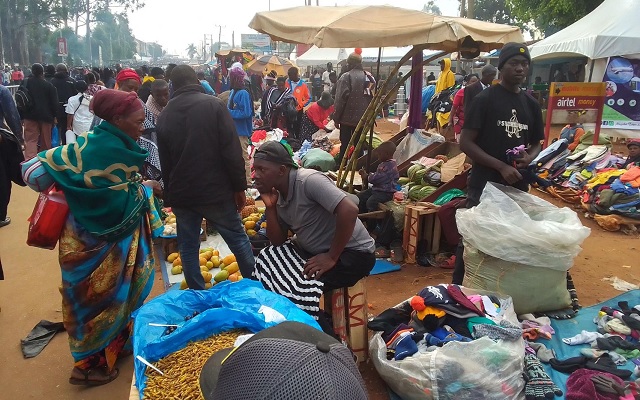
Kampala, Uganda | THE INDEPENDENT | Vendors operating at Namugongo Martyrs shrines are reporting mixed fortunes as the number of pilgrims continues to increase. Those dealing in beverages, food, fruits, and a few selling clothes have reported making some money from the large influx of pilgrims visiting the Catholic Martyr’s shrine.
The vendors are selling different kinds of merchandise such as second-hand clothes, shoes, fruits, phone accessories, and operating restaurants, among others. Moses Kalanzi, a vendor of second-hand trousers told URN that he has made good money starting from Friday and Saturday, which are the peak celebration days. Kalanzi arrived at Namugongo on Tuesday, but during the initial days, when the number of pilgrims was still low, he didn’t make much money.
He said that he paid 100,000 Shillings to operate until he leaves. Other vendors operating businesses outside the shrine have paid different amounts ranging from Shillings 70,000 to 150,000 depending on the type of business they are running. Mohammed Lwanga also revealed that he has made good money this year due to a large number of pilgrims.
He arrived on Thursday and has managed to sell a significant number of his clothes. He noted that pilgrims prefer affordable clothes since they need to keep the money for transportation. His clothing range from 5,000 to 10,000 Shillings.
Lwanga also revealed that this year, Kira Town Council charged them an operational fee of Shillings 10,000 compared to the previous year when they were charged Shillings 20,000.
Muwanguzi Miiro, who sells women’s overcoats, tops, and trousers, reported making good money in the three days he has been at Namugongo so far. However, Isiah Muwanguzi, another clothing vendor, stated that he hasn’t made much profit.
He mentioned that while there are many pilgrims, their purchasing power is not evenly distributed. Additionally, the expenses in Namugongo, including food, accommodation, and essential facilities like toilets and bathing, are high, which affects their overall profits.
Mosh Niwabiine, who came from out of town, also remarked that only a few categories of businesses have seen significant profits. This is his fifth year doing business at Namugongo, but he noted that although there are many pilgrims, they lack sufficient funds to make purchases.
Richard Baraganye stocked 600 jerry cans but reported that the pilgrims haven’t bought them in the numbers he had anticipated. As a result, he was forced to sell them at the price he bought them, which was 1500 shillings. Several pilgrims could not afford the selling price of 2500 or 2000 Shillings.
Overall, vendors at Namugongo are experiencing a mixed response to the increasing number of pilgrims, with some enjoying good sales, while others face challenges due to various factors such as price affordability and uneven buying patterns among pilgrims.
*****
URN
 The Independent Uganda: You get the Truth we Pay the Price
The Independent Uganda: You get the Truth we Pay the Price



